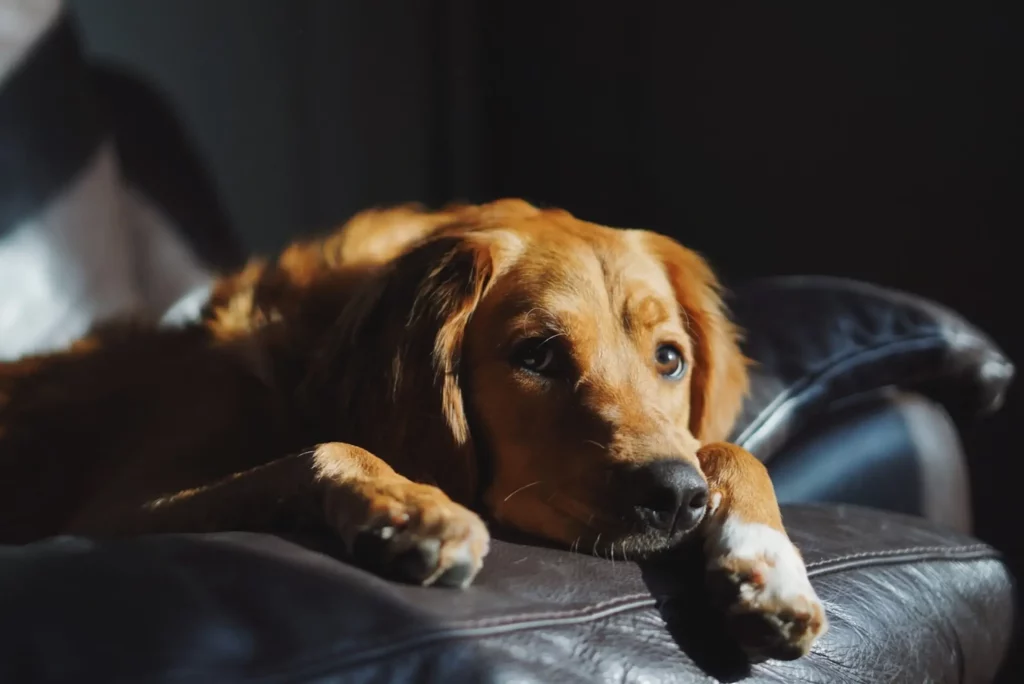Are you curious to know the signs a dog was neglected in the past? Keep reading to know the various signs that indicate a dog was neglected in the past.

As a dog owner, you should know that dogs rely on us for love, care, and a safe environment.
Unfortunately, some dogs may carry the scars of neglect from their past.
Identifying signs that a dog may have been neglected in the past can be important for understanding their history and addressing any ongoing needs.
While some signs may overlap with general behavioral or health issues, certain indicators might suggest a history of neglect.
As you keep on reading, you will get to know the eight unmistakable signs that may indicate a dog has experienced neglect.
Signs a Dog Was Neglected in the Past

Here are some potential signs that a dog may have been neglected:
1. Exhibiting Signs of Malnourishment or Emaciation
A clear indication of past neglect is malnourishment or emaciation.
Dogs that have been neglected in the past may exhibit signs of malnourishment, visible through their emaciated appearance.
Also, a dog with noticeable rib bones or a protruding spine likely suffered from inadequate nutrition.
Proper nutrition, along with gradual feeding schedules, is crucial to restore their health and well-being.
2. Overly Protective Behavior Towards Food
Dogs accustomed to scarcity may exhibit possessiveness or aggression around food.
Past neglect can lead to dogs becoming overly protective or possessive of their food.
Also, if your dog guards its meals excessively or displays aggression during feeding, it could be a lingering effect of past neglect.
Patiently working on desensitization during mealtime and encouraging positive associations with food can help alleviate this behavior.
3. Fearful or Skittish Demeanor
Neglected dogs may display a perpetually fearful or skittish demeanor, even in non-threatening situations.
Dogs that have experienced neglect may carry a persistent fear or skittishness, impacting their overall demeanor.
Furthermore, building trust through patience and positive reinforcement is crucial in helping them overcome their apprehensions.
Gradual exposure to positive experiences and environments can aid in their emotional recovery.
4. Hoarding or Guarding Possessions
Dogs that have experienced neglect may develop a tendency to hoard or guard possessions.
Past neglect can result in dogs developing an instinct to hoard or guard possessions as a survival mechanism.
Also, this behavior reflects a fear of losing access to resources based on their past experiences.
Encouraging a sense of security and providing ample resources can help alleviate this behavior over time.
5. Untreated Medical Conditions
Neglected dogs may suffer from untreated medical conditions due to a lack of proper care.
Chronic health issues or a lack of preventive care may be indicators of their past neglectful circumstances.
Consultation with a veterinarian is crucial to address and manage any lingering health concerns.
6. Aversion to Human Interaction
A dog that shies away from human interaction or cowers at the slightest approach may have faced social neglect.
Dogs subjected to social neglect may exhibit aversion to human interaction, displaying fear or withdrawal.
Furthermore, you can slowly reintroduce positive interactions, using treats and gentle approaches, which can help rebuild their trust and confidence around people.
7. Anxiety or Excessive Vocalization
Neglect can lead to anxiety disorders, manifested through excessive vocalization, pacing, or destructive behavior.
Furthermore, past neglect may result in anxiety disorders, expressed through behaviors like excessive vocalization, pacing, or destructive tendencies.
Addressing the root cause with patience and a supportive environment, along with possible professional guidance, is essential for their emotional recovery.
8. Inadequate Grooming and Poor Hygiene
Dogs subjected to neglect may display poor grooming habits and hygiene.
Also, neglected dogs may exhibit signs of inadequate grooming and poor hygiene.
Matted fur, overgrown nails, or a generally unkempt appearance could indicate a history of neglect.
Regular grooming sessions, combined with positive reinforcement, can help improve their overall cleanliness and well-being.
In conclusion, recognizing the signs of past neglect in dogs is the first step toward providing them with the care and love they deserve.
If you observe any of these indicators, consult with a veterinarian or a professional animal behaviorist to develop a tailored rehabilitation plan for your cherished pet.
Patience, positive reinforcement, and a nurturing environment are essential elements in helping neglected dogs overcome their past experiences and thrive in a loving home.
Related Searches:
